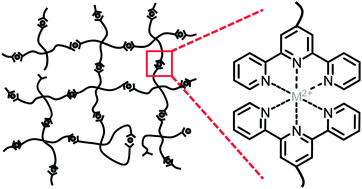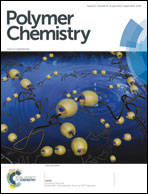Supramolecular polymer gels with potential model-network structure
Abstract
Supramolecular polymer gels are swollen networks of non-covalently interconnected macromolecules with a variety of potential applications as soft, stimuli-sensitive materials. The utility of these materials is based on their mechanical properties, which are determined on two levels. On a molecular scale, the strength of transient chain crosslinking is a main contributor; whereas on above-molecular scales, an additional contributor is the polymer network topology. In this paper, we present a modular toolkit to form supramolecular polymer networks that allows both these contributors to be controlled. Our approach is based on transition-metal mediated linking of star-shaped poly(ethylene glycol) building blocks that are end-capped with terpyridine moieties. This allows supramolecular networks of greatly varying strengths of transient interlinkage to be prepared by a modular choice of the linking metal ion and the surrounding solvent. We follow this approach and prepare a set of different supramolecular polymer gel networks with mechanical properties that are quantitatively related to the strength of their constituent crosslinking complexes. Static light scattering reveals just minor nanometer-scale polymer network inhomogeneity in some of the gels, whereas others exhibit non-negligible nanostructural heterogeneity. In the latter gels, we find the mechanical strength and resistance to relaxation to be greater than expected, indicating clustering of supramolecular crosslinks to be a mechanism of enforcement.


 Please wait while we load your content...
Please wait while we load your content...